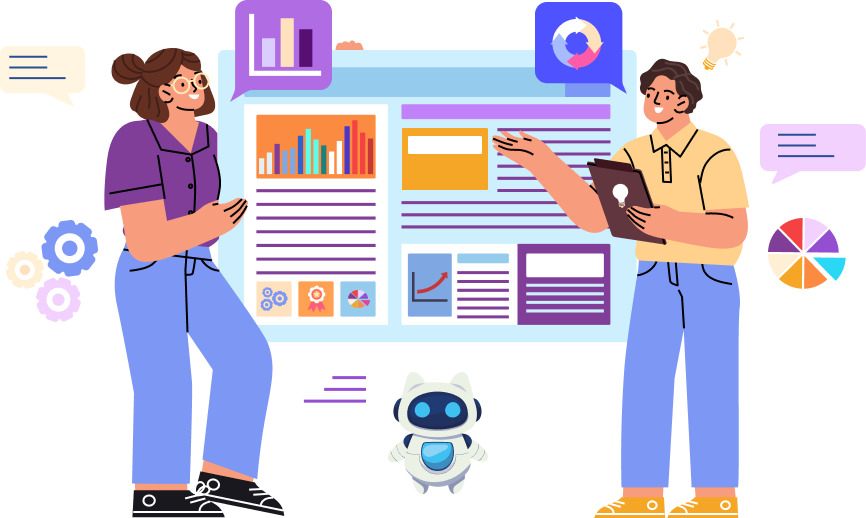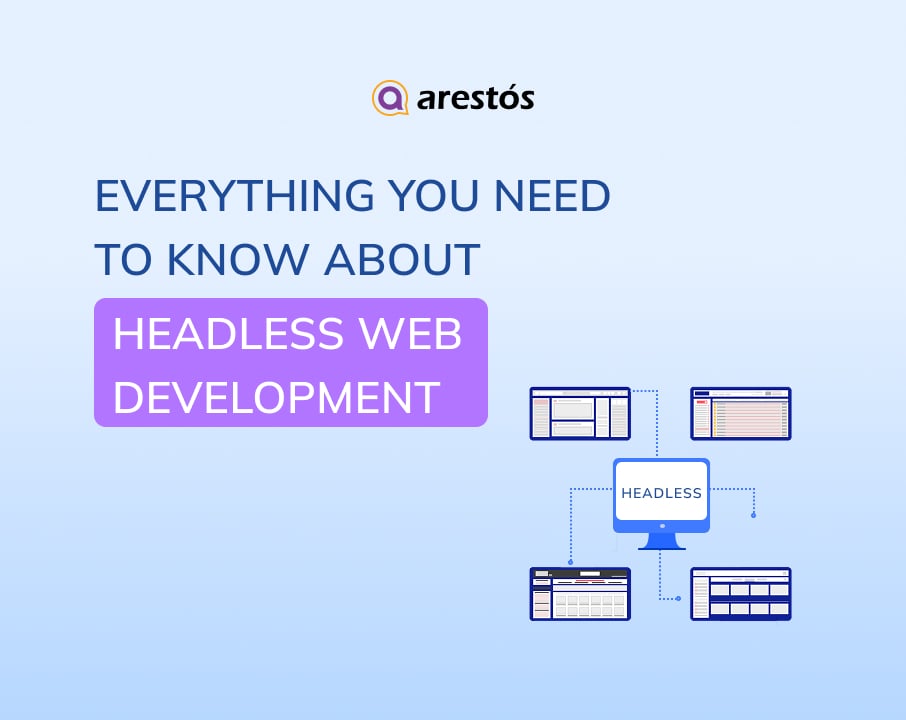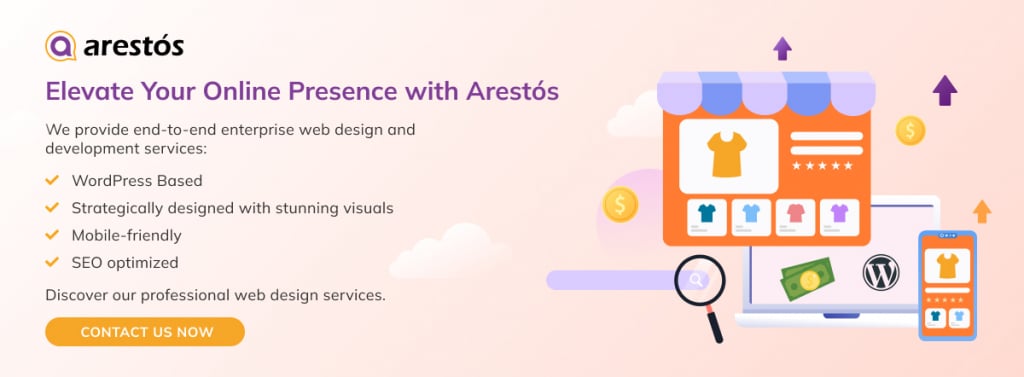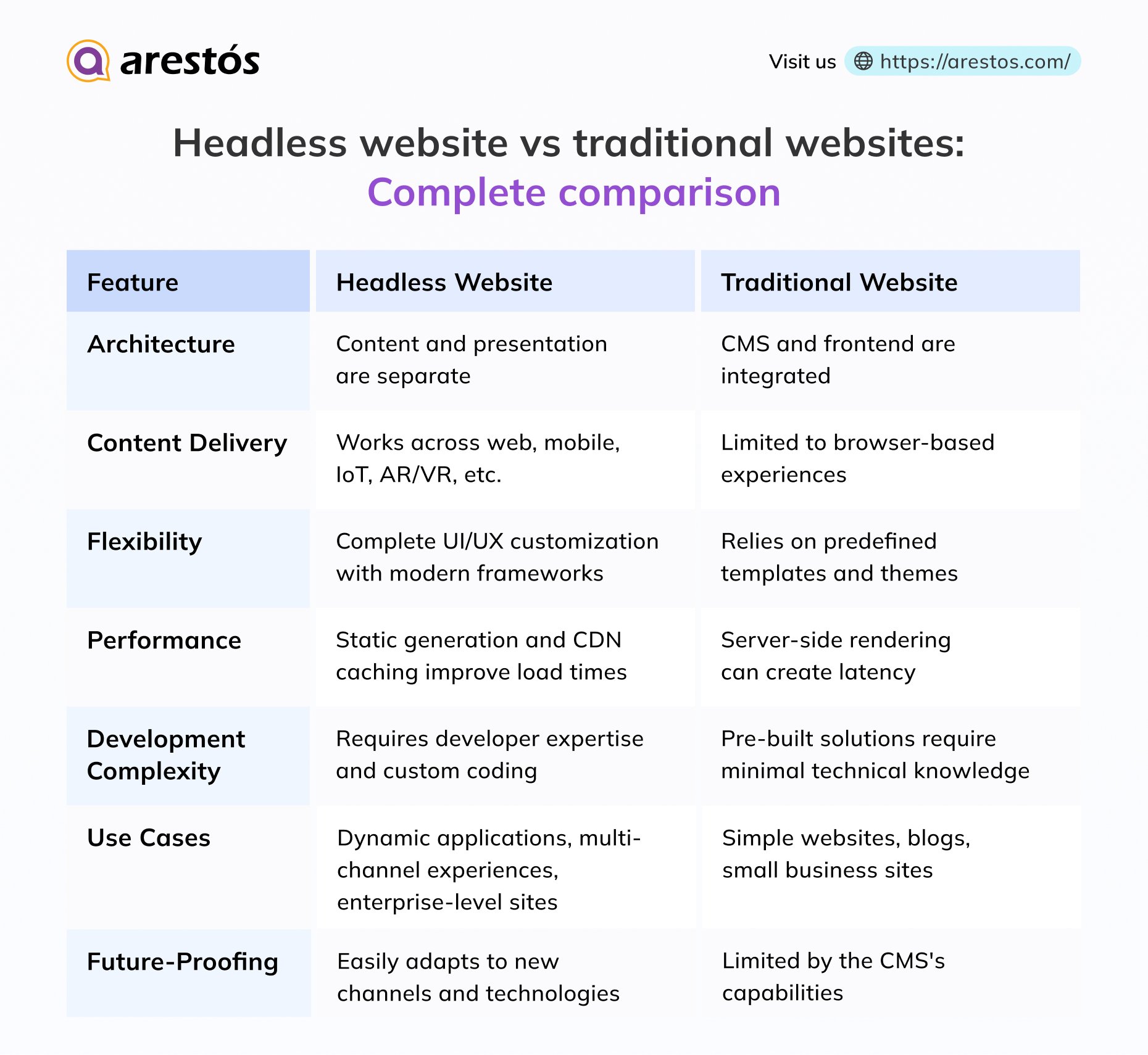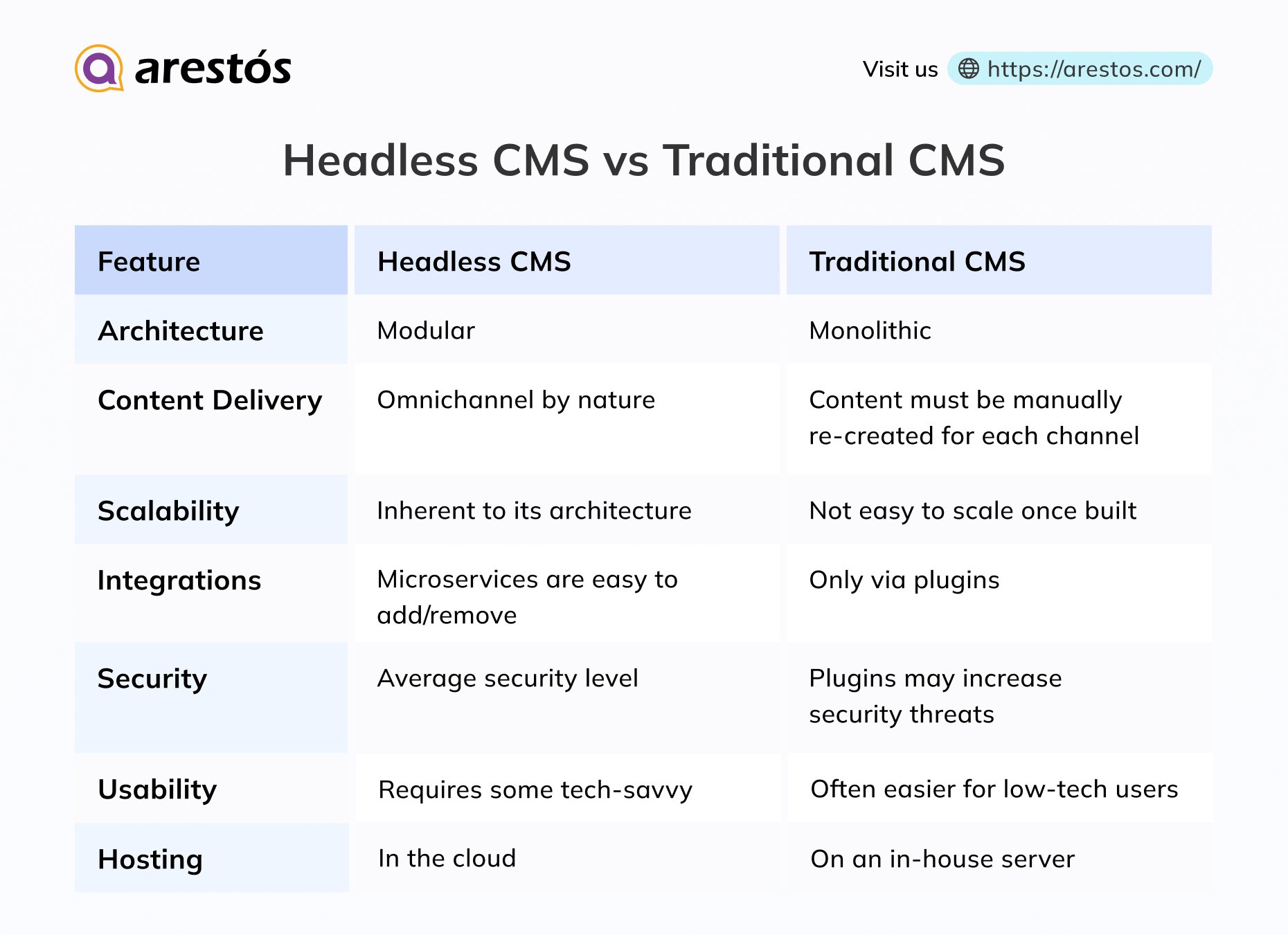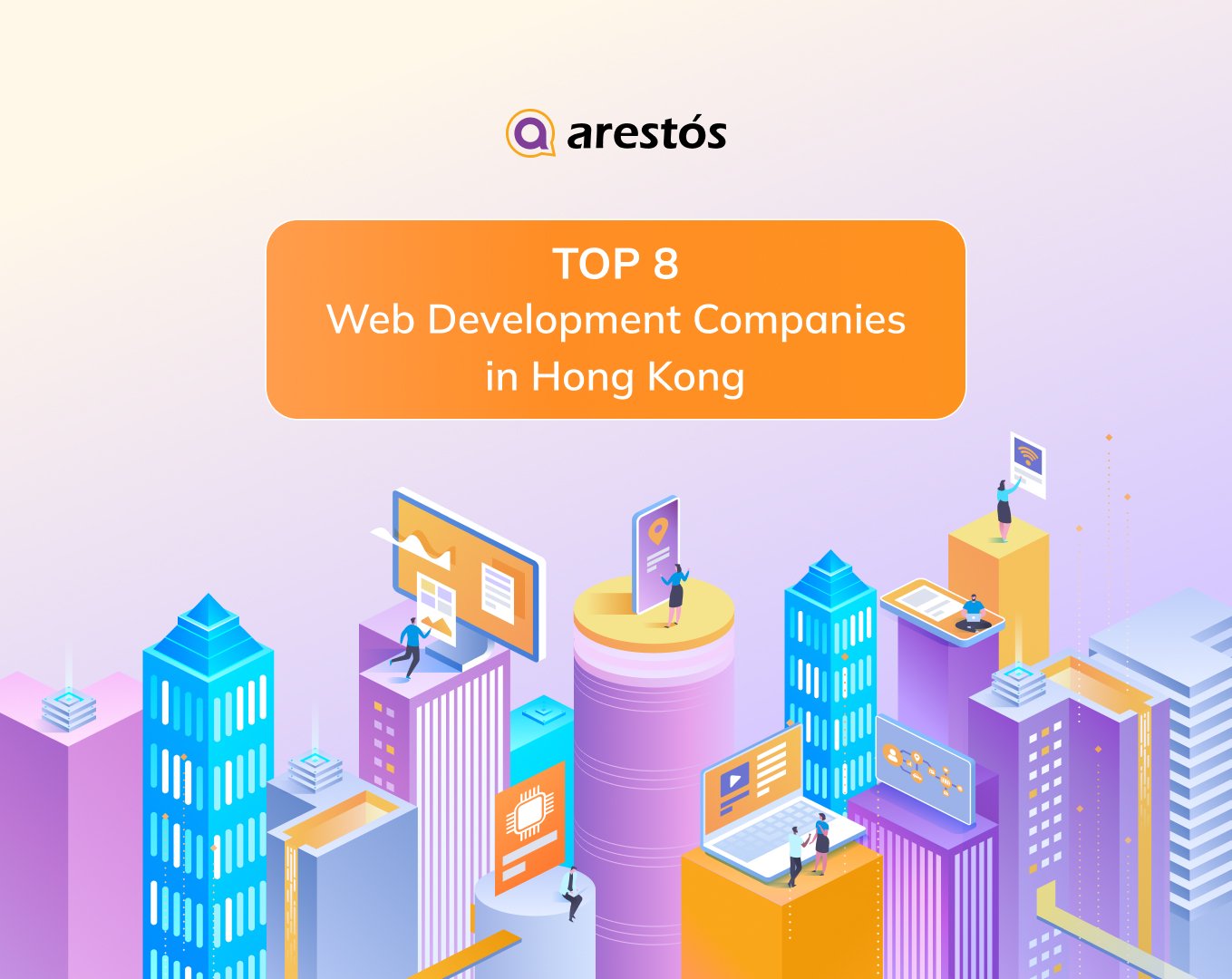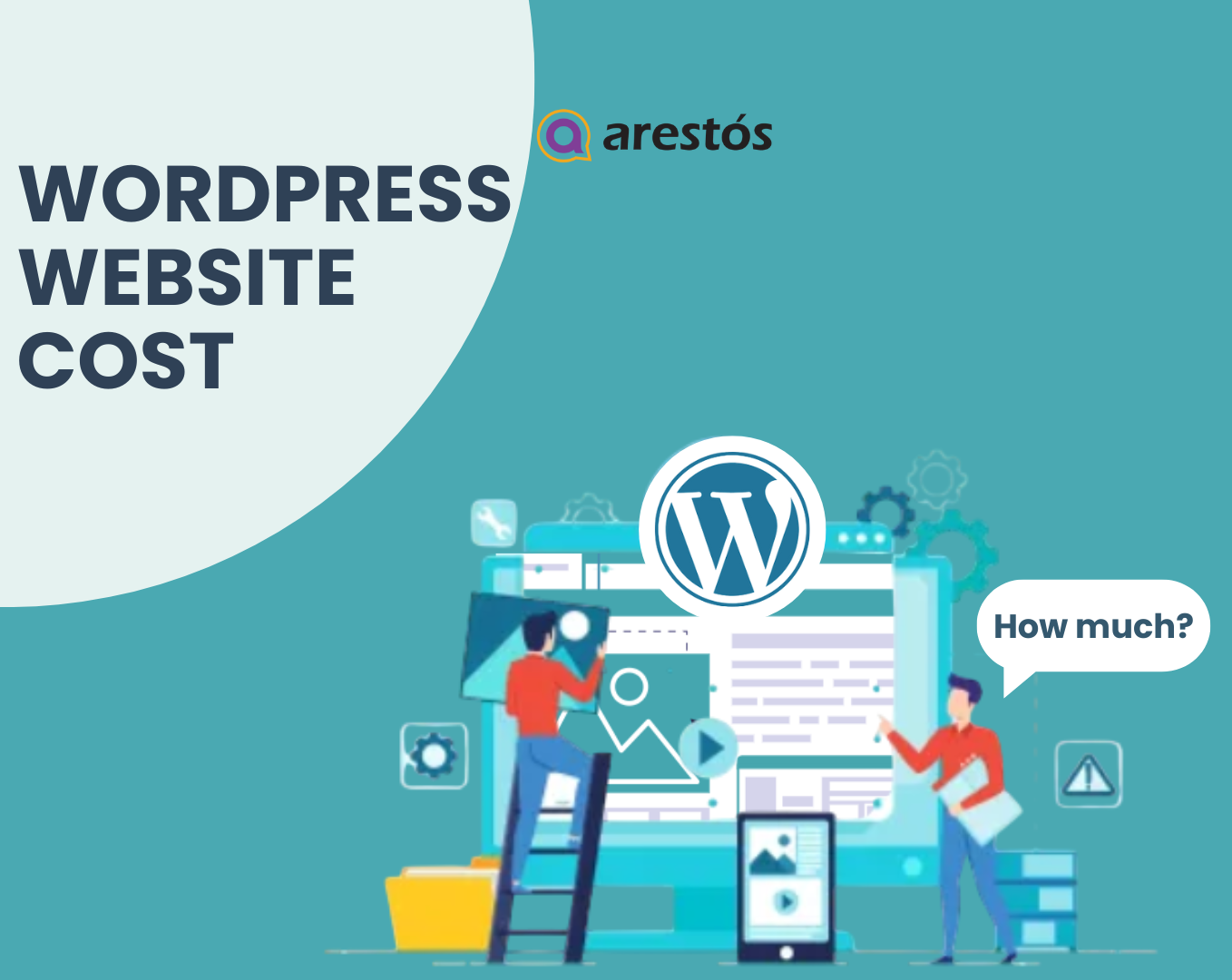Back to featured insights
What is Headless Web Development?
Curious how headless web development is transforming modern websites? Discover its core components, benefits, and when to make the switch. Whether you're building for flexibility, speed, or omnichannel delivery — this guide has you covered.
Table of Content
Share
As digital experiences evolve, businesses are looking for faster, more flexible ways to build and manage websites. That’s where headless web development comes into play. Rather than relying on the limitations of traditional web architecture, the headless approach offers a modern, adaptable framework that empowers teams to create better digital experiences across channels.
In this blog, we’ll explore what headless web development is, its key components, benefits, and when it makes the most sense for your project.
All about Headless Website Development
What is a Headless website?
A headless website is a type of website architecture where the frontend (user interface) is separated from the backend (content management system). Content is managed in the backend, often using a headless CMS, and delivered to the frontend via APIs.
This allows the content to be displayed across multiple platforms such as websites, mobile apps, or IoT devices without being tied to a specific presentation layer.
Why choose a Headless website?
General Benefits
- Enhanced Flexibility: Use any front-end technology you prefer, free from backend constraints.
- Omnichannel Experience: Deliver content from one source to multiple channels like websites, apps, and IoT devices.
- Improved Performance: Achieve significantly faster load times by serving content via APIs to optimized front-ends.
- Better Developer Experience: Allow front-end and back-end teams to work in parallel, speeding up development.
- Greater Security: Reduce the attack surface by separating the public-facing front-end from the core backend.
- Flexible Scalability: Scale your front-end and backend independently to meet demand efficiently.
- Future-Proofing: Redesign your user interface or adopt new tech without having to rebuild the backend.
Specific Advantages in E-commerce and Web Development
Specific Advantages in E-commerce
- Blazing-Fast Storefronts: Deliver ultra-fast, optimized front-ends that significantly boost conversion rates.
- Unlimited Customization & Personalization: Create unique and personalized customer experiences without being limited by templates.
- Sell Everywhere (Omnichannel Commerce): Manage content for web, mobile apps, and other sales channels from one unified backend.
- Rapid Experimentation & A/B Testing: Quickly test new front-end features and user experiences without disrupting backend operations.
Specific Advantages in Web Development
- Use the Best Tools for the Job: Empower developers to use their preferred frameworks and tools for the front-end and back-end.
- Independent & Parallel Development: Enable front-end and back-end teams to work in parallel, accelerating the development cycle.
- Future-Proof & Easier Redesigns: Easily redesign the user interface or adopt new tech without a costly backend overhaul.
- Reduced Attack Surface: Increase security by decoupling the public-facing front-end from the core CMS and database.
- Optimized Performance & Scalability: Gain granular control over performance and scale the front-end and back-end independently.
Headless website vs traditional websites: complete comparison
Components of a Headless Website
To understand how headless websites work, it’s important to break down their key components and roles in the system.
- Headless CMS: A headless CMS is designed to handle the creation, management, and storage of content. It offers an intuitive interface for content teams to produce and organize content efficiently. Some widely used headless CMS platforms are Contentful, Strapi, and Sanity.
- APIs: APIs act as the connection layer between the headless CMS and the front-end interface, allowing content to be delivered in a structured, consistent format. Common protocols used include REST, GraphQL, and JSON.
- Frontend Framework: In a headless architecture, the presentation layer is handled separately using frameworks like React, Vue, Angular, or Gatsby. This separation allows greater development flexibility and makes it easier to update the frontend without affecting the backend — a key difference from traditional CMS platforms.
What is Headless CMS?
A headless CMS is a backend system that stores content and delivers it via APIs, allowing the content to be displayed on any device or platform. Unlike traditional CMSs, it separates the content management from the presentation layer, enabling greater flexibility.
Key points
- Content is accessed through RESTful APIs, not templates
- The backend handles content, while the frontend manages presentation
- Supports omnichannel delivery such as websites, mobile apps, and IoT devices
- Allows content to be reused and optimized for different platforms
This decoupled architecture gives developers more freedom to design custom user experiences while maintaining centralized content control.
Headless CMS vs Traditional CMS
APIs for headless web
In a headless architecture, an API (Application Programming Interface) isn’t just a feature—it’s the bridge. It’s the mechanism that allows the backend (where content is managed) to communicate with the frontend (where content is displayed). Without a robust API, the entire headless setup wouldn’t work.
There are two primary types of APIs you’ll encounter when working with headless:
- REST API (Representational State Transfer): This is the traditional, most widely-used standard. A REST API operates using familiar HTTP requests (like GET, POST, PUT, DELETE) to retrieve and manage data.
- GraphQL: GraphQL is a newer, more flexible API technology developed by Facebook. It allows the frontend to send a single query that specifies exactly the data it needs—nothing more, nothing less.
Headless web frontend framework
One of the greatest advantages of a headless architecture is freedom—specifically, the freedom to choose your frontend technology. Instead of being locked into a traditional CMS’s templating system, you can use modern JavaScript frameworks to build fast, powerful, and unique user experiences.
Here are the most popular choices today:
- React: Developed by Facebook, React is the most popular framework with a vast ecosystem and a massive support community. It uses a component-based architecture, which makes building complex user interfaces more manageable.
- Vue.js: Known for its approachable learning curve and excellent documentation. Vue is highly flexible, suitable for both small projects and large-scale applications and is a developer favorite for its simple syntax.
- Angular: Developed by Google, Angular is a full-fledged platform that provides a clear structure for large, enterprise-level applications. It is “opinionated,” meaning it guides you on the best way to structure your app.
- Svelte: A radical new approach. Instead of running in the user’s browser, Svelte is a compiler that converts your code into small, high-performance JavaScript files during the build step. This results in blazing-fast applications.
How to Build a Website with Headless Web Development
Step 1: Choosing the right CMS
Choosing the right headless CMS is crucial for ensuring effective content management and seamless delivery in a decoupled architecture. Here are the essential aspects to evaluate:
- API Strength and Flexibility: Look for a CMS with comprehensive, well-documented APIs that support advanced functions like filtering, sorting, and complex queries to meet your data needs.
- Content Structure Customization: Assess the CMS’s ability to support custom content types and fields, allowing you to model data in a way that aligns with your specific use case.
- Support for Multilingual Content: If your site targets a global audience, ensure the CMS has built-in localization and internationalization features to manage multiple languages and regions efficiently.
- User-Friendly Interface: The CMS should offer an intuitive and efficient interface for content editors and administrators to create, update, and publish content with ease.
- Developer Experience: Evaluate the quality of developer tools, documentation, and available support. Seamless integration with your preferred front-end framework or static site generator (SSG) is also a major plus.
- Scalability & Performance: Consider whether the CMS can scale with your needs, especially in handling large content volumes and traffic. Features like CDN integration and caching can significantly improve load times and reliability.
- Cost & Licensing: Review the pricing model—including subscription tiers, hosting fees, and feature-based charges—to ensure it aligns with your project’s scope and budget.
Step 2: Designing the API layer
The API layer acts as the critical bridge between the front-end and the headless CMS. A well-designed API ensures seamless content delivery and management.
Defining API Endpoints and Data Structure
- Define Clear API Endpoints: Create logical URLs (e.g., /products, /blog/:id) that correspond to specific content or actions.
- Design Consistent Data Structures: Specify a clear format (schema) for the data returned by the API, ensuring predictability for the front-end.
- Align with Content Model: Ensure the API structure logically mirrors the website’s content and functionality for intuitive use.
Handling Data Retrieval and Manipulation
- Implement Efficient Data Retrieval: Build logic to fetch content from the CMS, sending only the necessary data to optimize performance.
- Enable Content Manipulation: Provide methods for creating, updating, and deleting content through secure API endpoints.
- Validate and Secure Data: Always validate incoming data against the defined structure and implement authorization to control who can make changes.
Step 3: Implementing the front-end
Choose a Front-End Framework or SSG (Static Site Generator)
- Select the right technology: Choose a framework (like React, Vue) or an SSG (like Gatsby, Next.js) based on project needs and team expertise.
- Consider SSGs for performance: Use static site generators for faster load times and a simpler deployment process.
Integrate with the API
- Connect to the CMS: Use the chosen framework’s tools to make HTTP requests to the API, fetching content from the headless CMS.
- Handle data and security: Implement logic to process API responses and manage authentication to ensure secure communication.
Build the User Interface (UI)
- Create UI components: Design and build your website’s visual components (headers, buttons, content cards, etc.).
- Focus on reusability: Build modular components that can be reused across the site to improve efficiency and maintainability.
- Populate with dynamic content: Use the data fetched from the API to dynamically fill your UI components with live content.
Use Cases and Choosing the Right CMS
When building a headless web architecture, choosing the right CMS depends on your specific needs. Below are key use cases and factors to consider.
E-commerce
For e-commerce websites, adopting a headless architecture offers enhanced flexibility to deliver seamless omnichannel experiences across web, mobile, and other digital touchpoints. When selecting a headless CMS for e-commerce, it’s essential to ensure that it supports:
- Product Information Management (PIM) – to centralize and manage product content efficiently
- Order Management – to handle customer orders, updates, and tracking
- Integration with Payment Gateways – to enable secure and smooth transactions
- Robust APIs – to support custom storefronts and personalized shopping experiences
Content Sites
For content-driven websites such as blogs, magazines, and news platforms, a headless CMS streamlines content management across multiple channels. Key features to look for include:
- Robust authoring environment – for a smooth and intuitive content creation experience
- Flexible content modeling and workflows – to structure content effectively and manage editorial processes
- Efficient content delivery and localization – to ensure timely distribution and support for multiple languages and regions
Mobile Apps
Headless architecture allows content from a CMS to be delivered and rendered seamlessly within native mobile applications. When selecting a headless CMS for mobile development, look for:
- Native mobile SDKs – to simplify integration with iOS and Android platforms
- Real-time content updates – to keep app content fresh and synchronized
- Offline content support – to ensure a consistent user experience even without internet access
Also, take into account key considerations such as developer experience, scalability, and total cost of ownership when comparing CMS options.
When to Choose Headless Web Development
Choosing a headless architecture is especially beneficial for projects that require high flexibility, scalability, and rapid iteration. Key use cases where headless truly excels include:
- Complex and Innovative UIs: A headless setup offers complete flexibility on the front end, making it ideal for building rich, interactive user interfaces. Free from the limitations of pre-defined CMS templates, you can utilize modern frameworks and JavaScript libraries to deliver highly customized and engaging digital experiences.
- Omnichannel Content Delivery: Headless architecture empowers true omnichannel publishing by allowing businesses to manage and deliver content consistently across multiple channels and devices. With reusable structured content APIs, you can efficiently serve content to websites, mobile apps, IoT devices, and more—streamlining your omnichannel strategy and workflows.
- Rapid and Frequent Iteration: Headless architectures simplify continuous iteration on the front-end. By decoupling the front and back ends, teams can release new features more frequently and respond quickly to user feedback.
Frequently Asked Questions
1. When should I consider using a headless architecture?
Consider headless when you need multi-platform content delivery, want more control over the frontend experience, require high scalability, or work with a team that prefers using modern frontend technologies.
2. Can I use WordPress as a headless CMS?
Yes, WordPress can be used in headless mode by using its REST API or GraphQL (with plugins like WPGraphQL) to serve content to a decoupled frontend.
3. Does headless web development improve website performance?
Yes. By decoupling the frontend from the backend, developers can optimize performance using modern frontend technologies, static site generators (SSGs), and content delivery networks (CDNs).
4. Is headless suitable for eCommerce websites?
Absolutely. Many modern eCommerce platforms (like Shopify, BigCommerce, and Magento) offer headless capabilities to deliver faster, more customizable user experiences across web and mobile.
Conclusion
Headless web development offers a modern and flexible solution for building websites that require speed, scalability, and omnichannel content delivery. By decoupling the front end from the back end, it empowers developers to choose the best tools for the job, enables faster iteration, and provides a superior user experience across platforms. Whether you’re building a content-heavy blog, an e-commerce store, or a mobile-first application, a headless approach can give you the edge you need in today’s digital landscape.
At Arestós, we specialize in building scalable, high-performing websites using modern technologies — including headless architecture. With a strong focus on performance, user experience, and long-term maintainability, our web development services are designed to help you meet your digital goals faster.
Contact us now to start building a powerful, future-ready website tailored to your business needs.
Subscribe to our newsletter!
Get updated to
the lastest IT trends
